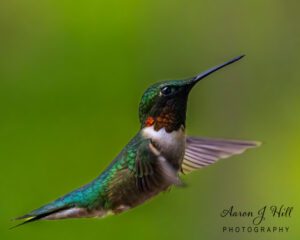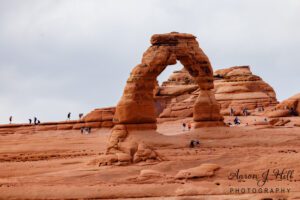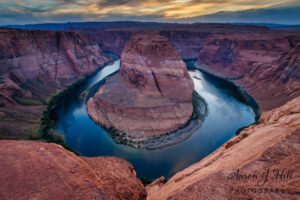Capturing the Beauty of Oxbow Bend
When it comes to iconic views in Grand Teton National Park, few are as striking or as well-loved as Oxbow Bend. This stunning panorama of the Snake River as it reflects the towering and surrounding peaks is a view that resonates with visitors from around the world. Situated along the main road between Jackson Lake Junction and Moran Junction, Oxbow Bend offers one of the most breathtaking and photogenic spots in the park. Photographers, tourists, and wildlife enthusiasts alike flock to this place for its beauty, tranquility, and abundant wildlife.
In this photograph, we can see the essence of Oxbow Bend on a calm day: the glassy water reflects the snow-covered peaks and creates a nearly perfect mirror image of Mount Moran. The scene is one of peace, an idyllic landscape untouched by time. This post will explore what makes Oxbow Bend such a beloved destination, the challenges and rewards of photographing this landscape, and some tips for capturing your own magical moments at this incredible spot.
The Magic of Oxbow Bend
Oxbow Bend offers visitors a unique experience of witnessing nature’s mirror. When conditions are right, the calm surface of the Snake River creates a flawless reflection of the Tetons, allowing visitors to see double the majesty of the mountains. The setting is especially enchanting at sunrise and sunset, when the light bathes the mountains and water in hues of gold, pink, and purple. On foggy mornings, a sense of mystery envelops the bend, with wisps of mist rising from the river and softening the scene.
In this panorama, the pristine snow on Mount Moran contrasts beautifully with the dark greens of the coniferous trees and the light sagebrush in the foreground. The cottonwood and aspen trees, still bare from winter, line the banks of the river, adding a touch of delicacy to the rugged landscape. Every detail, from the reflection to the interplay of colors, creates a scene that feels both serene and majestic.
Abundant Wildlife
Oxbow Bend is also known for its abundant wildlife. The area surrounding the bend is home to a variety of species, including moose, river otters, beavers, and bald eagles. Early mornings or late evenings are often the best times to see wildlife, as animals tend to be more active at dawn and dusk. Elk and deer frequently graze along the river’s edge, and if you’re lucky, you might spot a bear foraging along the banks. The rich biodiversity, combined with the incredible landscape, makes Oxbow Bend a favorite location for both wildlife photographers and nature enthusiasts.
The Challenges and Rewards
Capturing the beauty of Oxbow Bend in a photograph can be both a rewarding and challenging experience. The key to a successful shot is timing and patience. In this image, the photographer managed to capture a moment when the water was completely still, allowing for that perfect mirror reflection of Mount Moran and the surrounding mountains. This level of stillness is often fleeting, as even a light breeze can ripple the water and distort the reflection.
Capturing Reflections
To capture a reflection like this, it’s best to arrive early in the morning, especially around sunrise. The air is often cooler and more stable at dawn, which increases the chances of calm water. Sunrise also brings soft, diffused light that illuminates the Tetons with a gentle glow. This type of lighting creates a balanced exposure, avoiding the harsh contrasts that can occur later in the day when the sun is higher in the sky. The warm morning light can add depth to your images, highlighting the contours of the mountains and casting a golden hue across the landscape.
Wide-angle Lens
Using a wide-angle lens is essential for capturing the sweeping landscape of Oxbow Bend, as it allows you to include both the foreground and background in your frame. This perspective not only showcases the grandeur of Mount Moran but also captures the textures of the riverbank and the subtle colors of the vegetation. A tripod is also essential for capturing sharp, crisp images, especially in low-light conditions common at dawn or dusk.
Exposure
One challenge photographers may encounter at Oxbow Bend is managing the exposure. The snow-covered peaks of the Tetons can easily appear overexposed when contrasted with the darker foliage and water. To counter this, try using a graduated neutral density filter to balance the exposure between the sky and the land. Another option is to bracket your shots and merge them later in post-processing, creating a high dynamic range (HDR) image that retains detail in both the shadows and highlights.
Tips for Visiting and Photographing
If you’re planning a visit to Oxbow Bend, here are some tips to help you make the most of your experience and capture memorable photos:
- Arrive Early or Stay Late: To catch the best light and increase your chances of calm water for reflections, arrive at sunrise or sunset. Early mornings are generally less crowded, offering a more peaceful experience.
- Check the Weather: Calm, clear days are best for reflections, but don’t discount a misty or foggy morning. Fog can add a mystical quality to your photos and create a unique atmosphere.
- Bring a Telephoto Lens: While a wide-angle lens is ideal for capturing the landscape, a telephoto lens can be useful if you spot wildlife in the distance. Oxbow Bend is home to many animals, and a telephoto lens will allow you to photograph them without disturbing their natural behavior.
- Use a Polarizing Filter: A polarizer can help reduce glare on the water and enhance the colors in your images, making the blues of the sky and greens of the trees more vibrant.
- Explore Different Angles: While the classic view of Oxbow Bend is stunning, don’t be afraid to experiment with different angles and perspectives. Moving a bit upstream or downstream along the river can reveal new compositions and foreground elements.
- Be Respectful of Wildlife: Remember that this is a natural habitat for many animals. Keep a safe distance, and use a zoom lens rather than approaching wildlife too closely. Respect posted signs and guidelines, and be mindful of the impact you have on the environment.
- Practice Patience: Oxbow Bend rewards those who are willing to wait. Sometimes the best light or the perfect moment takes time to develop. Settle in, observe the surroundings, and wait for nature to reveal its magic.
Why Oxbow Bend Resonates with Visitors
Oxbow Bend isn’t just a picturesque location; it’s a place that embodies the beauty and tranquility of Grand Teton National Park. The mirror-like reflection, the majestic backdrop of the Tetons, and the possibility of encountering wildlife make it a destination that feels both intimate and awe-inspiring. Standing on the riverbank, you feel connected to something timeless—a landscape that has inspired countless visitors, artists, and photographers.
For many, a visit to Oxbow Bend is about more than taking photos; it’s about experiencing a profound sense of peace and wonder. The quiet moments spent watching the mountains reflected in the water, the stillness broken only by the occasional splash of a fish or call of a bird, are memories that linger long after you leave.
In capturing this panoramic photograph of Oxbow Bend, the photographer has shared not only the beauty of the place but also the quiet, reflective experience it offers. This image, with its perfect symmetry and gentle colors, is a reminder of why we seek out places like Grand Teton National Park—to feel humbled, inspired, and connected to the natural world.




Pingback: Fall Landscape Photography: Tips, Techniques, and Inspiration